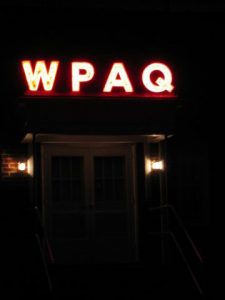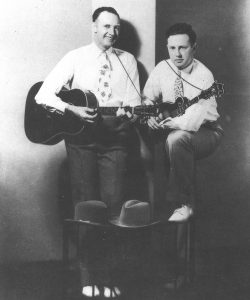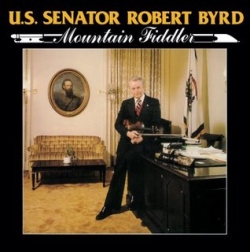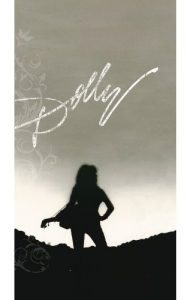So asks legendary Atlanta pastor the Reverend J. M. Gates in this 1929 Okeh Records recording (SFC# 78-10689):
Did You Spend XMas Day In Jail
Category: Music
Christmas Recordings From WPAQ
 The Holiday Season is upon us again. The SFC’s Ralph Epperson Collection holds several recordings from WPAQ Radio that are related to, or were recorded on, Christmas Day.
The Holiday Season is upon us again. The SFC’s Ralph Epperson Collection holds several recordings from WPAQ Radio that are related to, or were recorded on, Christmas Day.
FT-8006 “Christmas Time is Coming”, WPAQ Merry-Go-Round Jam Session. (Glen McPeak, Rex Hodges, Walter McMillian, Amos Dawson, and Clyde Johnson.) December 19, 1981:
FT-8006 Christmas Time is Coming WPAQ Merry Go Round Jam Session. Glen McPeak, Rex Hodges, Walter McMillian, Amos Dawson, and Clyde Johnson December 19, 1981
FT-9745 “Ballad Of The Lawson Family”, WPAQ Merry-Go-Round, Kinney Rorrer and Sweet Sunny South from April 21, 1984:
FT-9745 Ballad Of The Lawson Family WPAQ Merry-Go-Round Kinny Rorrer and Sweet Sunny South April 21, 1984
Other notable recordings include FT-8074-FT-8076 – the WPAQ Merry-Go-Round on Christmas Morning Jam Session that took place December 25, 1982, with a variety of WPAQ area favorites:
FT-8075 Merry-Go-Round on Christmas Morning Jam Session December 25, 1982
Xmas 83 at Dena’s
Students, scholars, and fans of folklore often can’t help but romanticize the experiences of early field collectors, discovering lost tunes and musicians unknown outside their local communities. The music is just so compelling and raw and often very good, from the legendary Lomax (John and Alan) recordings of the 1930s to the astounding body of work collected by the scholar/musicians like Mike Seeger and John Cohen in the 1960s, and countless others whose collections remain tucked away in attics or housed in archives like the Southern Folklife Collection and in institutions across the country.
Hearing the music today offers glimpses to worlds of experience foreign to most listeners. The listener becomes a voyeur, peeking through the window into the homes and lives of the performers (and often the field recorders too) of a forgotten past. While the feeling of being “let in on a secret” is profound and exciting, regarding the documented performance as a “secret” or a private moment between a few individuals distances the listener, and the temporal difference between when the material was recorded to when it is shared with a larger listening audience only further emphasizes that distance. Instead of the field recording creating a cultural connection, it is exoticized to the point where such an experience (finding and recording lost or forgotten or ignored practitioners of a similarly lost, forgotten or ignored art form) seems impossible to replicate in the present, “modern” time. Thankfully there are those who refuse to relegate those experiences exclusively to the past. Instead, these individuals constantly seek to break down the barriers created by an Orientalized other represented solely by the sounds on a tape by finding the hands, faces, and minds behind the music.
Alice Gerrard and Andy Cahan spent many years in the late 1970s and early 1980s seeking out musicians in and around Galax, Virginia and Toast, North Carolina. They developed strong relationships with some of these regions’ greatest living musicians, including Luther Davis, Roscoe and Leone Parrish, and Tommy Jarrell. Cahan and Gerrard recorded hundreds of hours of interviews, lessons, jam sessions they shared with these musicians. They learned countless tunes these performers but they also became their very good friends, sharing meals, helping with chores when health problems interfered, and even sharing holidays with them like a family. In 1983, Cahan and Gerrard spent Christmas day with Tommy Jarrell and his daughter Ardena “Dena” Jarrell at her house in Toast, NC, eating, drinking eggnog and, of course, playing music. They had such a good time that the ensemble composed a song to commemorate the event, “Xmas 83 at Dena’s.”
I’m including 3 clips here: an introduction, a clip of the song itself, and a brief moment after the song when Tommy, Andy and Alice talk about composing fiddle tunes and recording. Please enjoy. Sounds like they did.
Xmas83 at Dena’s_intro
XMas at Dena’s
Xmas83 at Dena’s_outro
All clips from audiocassette FS-8341: Tommy Jarrell with Alice Gerrard and Andy Cahan, recorded on 25 December 1983, in Toast, N.C. From the Alice Gerrard Collection.
The ongoing digitization project Fiddles, Banjos and Mountain Music: Preserving Audio Collections of Southern Traditional Music, is made possible by a grant from the National Endowment for the Humanities.
The Stanley Brothers Live At Ash Grove, 1962
 Armadillo World Headquarters, CBGB’s, The Bluebird Café, Tipitina’s, Whisky A Go-Go, the Village Gate, all names of landmark live music venues. These spaces are inseparable from the music scenes fermented inside their walls, and the proper names themselves have come to represent far more than the physical structures. The words conjure structures of feeling of specific eras (whether the business is still open or not), reflecting cultural and musical histories that reach far beyond the individuals who actually experienced these spaces, becoming almost mythological in their stature. The lists of musicians who played on the stages, the performances and collaborations that seem out of fanboy dreams, and the glimpses into these worlds through scattered photographs, films, and audio recordings only add to the ethereal nature of their reputations. The reality of struggling small businesses operating on the fringes of society and exhausted musicians toiling to keep their heads above water get lost in the narrative, but the influence of these venues depends more on the dream than the reality.
Armadillo World Headquarters, CBGB’s, The Bluebird Café, Tipitina’s, Whisky A Go-Go, the Village Gate, all names of landmark live music venues. These spaces are inseparable from the music scenes fermented inside their walls, and the proper names themselves have come to represent far more than the physical structures. The words conjure structures of feeling of specific eras (whether the business is still open or not), reflecting cultural and musical histories that reach far beyond the individuals who actually experienced these spaces, becoming almost mythological in their stature. The lists of musicians who played on the stages, the performances and collaborations that seem out of fanboy dreams, and the glimpses into these worlds through scattered photographs, films, and audio recordings only add to the ethereal nature of their reputations. The reality of struggling small businesses operating on the fringes of society and exhausted musicians toiling to keep their heads above water get lost in the narrative, but the influence of these venues depends more on the dream than the reality.
The Eugene Earle Collection is full of recorded artifacts that help fill out the narratives, exposing more of the reality but adding to the dream at the same time. The country music parks like New River Ranch (featured here a week ago) offered one kind of performance opportunity for the traditional country and mountain music in the 1950s and 1960s, but the folk clubs, coffeehouses and college stages offered another. The Ash Grove is one of the latter.
Founded in Hollywood by Ed Pearl in 1958, the Ash Grove was unprecedented in the variety of folk legends and young artists that shared the stage. The club offered many musicians from the South and East their first opportunities to find audiences on the West Coast. Doc Watson, The Country Gentlemen, Mississippi John Hurt, Son House, Muddy Waters, Pete Seeger, June Carter, Johnny Cash, Phil Ochs, Joan Baez, Johnny Otis, Ramblin’ Jack Elliott, Ian and Sylvia, Sonny Terry, Brownie McGee, New Lost City Ramblers, The Weavers, The Greenbriar Boys, Lightnin’ Hopkins, Barbara Dane, Holly Near, Arlo Guthrie, Mance Lipscomb, Guy and Candie Carawan, John Jacob Niles, Bukka White, and Kris Kristofferson all played the Ash Grove. As did Oscar Brown, Jr., Chuck Berry, James Booker, Ravi Shankar, Mongo Santamaria, Miriam Makeba , and the Virgin Islands Steel Band. Ry Cooder had his first performance there when he was 16 and the Stanley Brothers, featured in the clips below, performed there numerous times throughout the 1960s. The Ash Grove closed in 1973, possibly as a result of arson attacks by those who disagreed with the venues left leaning social and political affiliations, but it’s legacy lives on in the collective cultural memory, thankfully bolstered by recordings like those in the Eugene Earl Collection here at the SFC.
Digitized for the project Fiddles, Banjos, and Mountain Music: Preserving Audio Collections of Southern Traditional Music, the following clips come from FT-12936 of the Eugene Earl Collection. The Stanley Brothers in this incarnation include Carter Stanley on guitar, Ralph Stanley on banjo, Vernon Derek on fiddle, Curly Lambert on mandolin, Roger Bush on bass. Recorded August 30, 1962, the performance includes a variety of traditional mountain music, bluegrass standards, and Stanley Brothers originals.
More recordings from the Ash Grove to come, but for now enjoy the Ash Grove intro with the Stanley Brothers kicking off the show with “Late Last Night”: late last night_stanley bros
and Carter’s introduction of “Drifting too Far From the Shore” with a description of the “Monroe Sound” and a touching acknowledgement of Charlie Monroe’s contribution to country music: Drifting too far_Stanley Brothers_mo
The ongoing digitization project Fiddles, Banjos and Mountain Music: Preserving Audio Collections of Southern Traditional Music, is made possible by a grant from the National Endowment for the Humanities.
The Monroe Brothers Live at New River Ranch, 1955
 To follow up on the recent photo-post with Bill Monroe, we offer a live recording of the Monroe Brothers from New River Ranch, May 8, 1955.
To follow up on the recent photo-post with Bill Monroe, we offer a live recording of the Monroe Brothers from New River Ranch, May 8, 1955.
With the rise of Rock and Roll and Nashville’s turn towards hyper-stylized Countrypolitan, country music parks and campgrounds of the 1950s and 1960s acted as catch-all venues for performers and fans in the still very active hillbilly and honky-tonk music scenes. Located just across the Pennsylvania border in Rising Sun, Maryland, New River Ranch welcomed everyone: old-time legends, honky-tonk heroes, and homegrown fiddle bands.
With an open-air stage and wooden planks for seats, picnic suppers and rudimentary PA, what New River Ranch lacked in amenities, it made up tenfold with the music. On the urging of Mike Seeger, Ralph Rinzler first visited New River Ranch in 1954 to see Bill Monroe and the Bluegrass Boys; an experience that profoundly affected the future of not only Rinzler and Monroe, but also the future of folk and country music in ways that continue to resonate today.
The Eugene Earle Collection holds a treasure trove of live recordings from New River Ranch and countless other parks and venues across the U. S. A. Digitized for the project Fiddles, Banjos, and Mountain Music: Preserving Audio Collections of Southern Traditional Music, these clips come from a reel-to-reel tape likely recorded by Gerald Mills on May 8, 1955, featuring a rare 1950s reunion by The Monroe Brothers, Charlie and Bill, whose bands both performed regularly at the park, just two years before Charlie’s retirement from music in 1957. The raw beauty of the setting and the enthusiasm of the audience and the performers shine through on these recordings. “Nine Pound Hammer” is the brothers’ classic rendition of the Merle Travis tune, including the ferocious first licks of Bill’s chiming mandolin solo. “This World is Not My Home” is their rendition of the gospel tune popularized by the Carter Family. The vocal harmonies are stunning. Please enjoy.
bill and charlie monroe_9 pound hammer_clip
bill and charlie monroe_this world is not my home_clip
Both clips from SFC field tape FT-12917 in the Eugene Earle Collection.
The ongoing digitization project Fiddles, Banjos and Mountain Music: Preserving Audio Collections of Southern Traditional Music, is made possible by a grant from the National Endowment for the Humanities.
U.S. Sen. Robert Byrd, Mountain Fiddler
 Congratulations to West Virginia Senator Robert C. Byrd, who today marks his 20,774th day in office, making him the longest-serving member of Congress in U.S. history. To fully appreciate how long Byrd has served, note that he has had time to both filibuster the Civil Rights Act of 1964 and to endorse (and, presumably, vote for) the first African-American to be elected President. He has come a long way.
Congratulations to West Virginia Senator Robert C. Byrd, who today marks his 20,774th day in office, making him the longest-serving member of Congress in U.S. history. To fully appreciate how long Byrd has served, note that he has had time to both filibuster the Civil Rights Act of 1964 and to endorse (and, presumably, vote for) the first African-American to be elected President. He has come a long way.
Though hampered now by his age and health problems (he will be 92 years old on Friday), Byrd has been an avid country fiddler for most of his life, heavily influenced by the recordings of legendary West Virginia fiddler Clark Kessinger. In 1978, while Byrd was Senate Majority Leader, he recorded an album for County records titled U.S. Senator Robert Byrd: Mountain Fiddler (SFC # FC-13991).
Listen below to a clip from that album of Sen. Byrd, on fiddle and vocals, performing “Rye Whiskey” with Doyle Lawson on guitar, James Bailey on banjo, and Spider Gilliam on bass.
Rye Whiskey
US Military V-Discs in the Eugene Earle Collection
During World War II, the U.S. military and American record companies collaborated to produce a series of records for the “V-Disc” program, a morale-boosting effort designed to provide troops overseas with access to exclusive new music. Many of the top performers of the day, including Frank Sinatra and Duke Ellington, contributed recordings to the project. The V-Discs were produced exclusively for use by military personnel and the artists who volunteered their recordings insisted they not become commercially available, so when the program came to an end in 1949 the Army destroyed most of the original pressing plates and many of the existing discs, making V-Discs a rather collectible commodity today.
The 261 V-Discs in the Eugene Earle Collection represent a wide variety of popular music, including big band jazz, country and blues. Many of the songs were recorded with the military audience in mind, as you can hear in the clip below of Carson Robison performing “Nursery Rhymes of 1944”, from Army V-Disc 145 (SFC # TR/12-19). He really lets Hitler have it, in the classic schoolyard manner.
Nursery Rhymes of 1944
Louis Dotson Plays The One-String
Pictured is farmer and musician Louis Dotson of Lorman, Mississippi, photographed by Bill Ferris in 1973, constructing a “one-string guitar” on the wall of his front porch. The traditional instrument, sometimes referred to as a “diddley-bow”, is made by stretching a single guitar string between two nails and played as a slide guitar with a bottle neck or other object used to adjust the pitch. Dotson is quoted extensively in Ferris’ new book, Give My Poor Hear Ease:
“My daddy used to play music. He used to play all the time. That’s how I learned to play the guitar. After he died, the other boys, they took the guitar. I couldn’t get another one. So I decided to put me up a wire. I just call it ‘part of a guitar.’ It’s a one-string guitar, but it sounds like it’s got six strings on it. …Nobody else around here can play it but me. People, they come and listen to me. They say they don’t see how I can do it.”
Listen to a clip of Louis Dotson play “Bottle Up and Go” on the front porch of his farm (complete with crowing rooster), from SFC field tape #FT-10105: Bottle Up and Go
Clip and photo from the William R. Ferris Collection.
New "Dolly" Box Set Released

Today Sony Legacy will be releasing a new Dolly Parton box set, appropriately entitled “Dolly”. The four-CD, 99-track set is the first cross-label, career spanning Dolly Parton retrospective.
The Southern Folklife Collection was proud to provide Sony with remote access to the first two songs presented on this compilation, “Puppy Love” and “Girl Left Alone”, recorded in 1959 for Eddie Shuler’s Goldband Records by then thirteen-year-old Dolly Parton.
Listen to “Puppy Love”, from the original master tape (#FT-7670 in the Goldband Records Collection): Puppy Love
Two Sides of "Pretty Boy Floyd"
 On October 22, 1934, the notorious bank robber Charles Arthur “Pretty Boy” Floyd was gunned down by the FBI on farmland outside of East Liverpool, Ohio. Floyd’s decade long career of daring bank robberies and prison escapes had made him both J. Edgar Hoover’s “Public Enemy No. 1” and a genuine folk hero, especially amongst his fellow Oklahomans, hard hit by the Depression and with little sympathy for the banks.
On October 22, 1934, the notorious bank robber Charles Arthur “Pretty Boy” Floyd was gunned down by the FBI on farmland outside of East Liverpool, Ohio. Floyd’s decade long career of daring bank robberies and prison escapes had made him both J. Edgar Hoover’s “Public Enemy No. 1” and a genuine folk hero, especially amongst his fellow Oklahomans, hard hit by the Depression and with little sympathy for the banks.
One of those fellow Oklahomans was of course Woody Guthrie, who helped burnish Floyd’s posthumous reputation with his 1939 recording “Pretty Boy Floyd”, casting the outlaw as a modern-day Robin Hood. The song would be further popularized through covers by Joan Baez, Pete Seeger, and the Byrds.
Woody Guthrie – Pretty Boy Floyd
(Clip from SFC CD-827)
While Guthrie’s song is certainly the most well known “Pretty Boy Floyd”, the first may have been the “Pretty Boy Floyd” written by Bob Miller and recorded by Ray Whitley on October 27, 1934, less than a week after Floyd was killed. As you can hear from the clip below, it puts the focus less on the outlaw’s humanitarian pursuits and more on his cross country string of homicides.
Ray Whitley – Pretty Boy Floyd
(Clip from SFC 78-9780)

